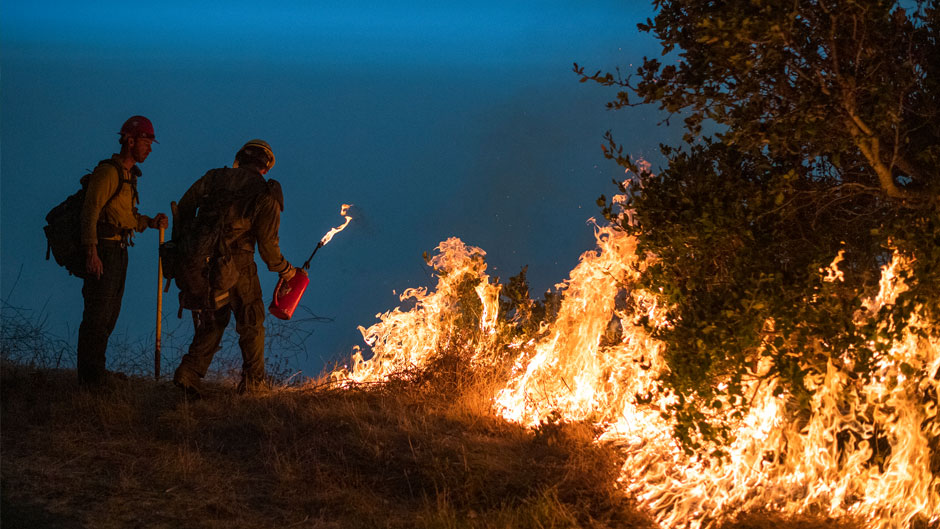More than five million acres destroyed in three states. Tens of thousands of people displaced. Dozens dead.
The wildfires raging on the West Coast are taking an unprecedented toll, and, as in years past when such blazes have scorched that part of the United States, the debate as to how much climate change is exacerbating the blazes continues.
While the two major presidential candidates and many others offer differing opinions on the topic, what is obvious is that one of the states being ravaged by wildfire this year has seen an uptick in the number of conflagrations over last year.
“California has definitely recorded more wildfires this year than it did in 2019,” said Sisam Shrestha, a Ph.D. student who studies atmospheric sciences at the University of Miami Rosenstiel School of Marine and Atmospheric Science. “Just in the period of January to August this year, there were 5,924 fires reported in the state, slightly higher than the five-year average of 4,162 fires for the same period.”
Rosenstiel School experts gave their input on what’s turning the West Coast into a tinderbox.
How much of a factor are warmer temperatures playing in fueling the destructive fires?
Warming temperatures are indeed contributing to the fire season this year, both through aiding the fires themselves and through drying out the forests, including by reducing the winter snowpack—setting the stage for the fire season beginning in late summer, when the forests are dry and with the winter rains and snow still a few months out. The fire season out West is predicted to extend longer than is typical, and the warmer temperatures contribute to the fires being more severe at the season’s beginning.
—Paquita Zuidema, professor in the Department of Atmospheric Sciences at Rosenstiel School of Marine and Atmospheric Science
The year 2020 has been a year of record-breaking heat waves. And with the onset of La Niña, dryer conditions are expected to prevail in the region. These conditions do make the region more susceptible to wildfires. However, no particular extreme event can be solely attributed to anthropogenic climate change. There are always factors like proper forest management and urban planning that come into play.
—Sisam Shrestha, Ph.D. student in the Department of Atmospheric Sciences at the Rosenstiel School
How are the fires affecting weather patterns in that region?
The smoke has been carried along by the prevailing winds to the east coast and as far away as the United Kingdom. The smoke does interact with the atmosphere, both by shielding the surface from sunlight and by warming the atmosphere further through absorbing sunlight. Model simulations indicate surface cooling of 5-to-10 degrees Celsius out West, just from less sunlight being able to reach the ground. This will reduce cloud convection, all else equal—so less lightning, but also less rain. That would be the dominant effect on the weather.
—Paquita Zuidema, professor in the Department of Atmospheric Sciences at the Rosenstiel School
Are we seeing a cyclical pattern when it comes to these wildfires?
The climate change part of it is not a cycle. It’s a one-way ticket. It’s the same as sea level rise. People like to say it (sea level) goes up and down. But there’s no reason to think that it’s going down in the foreseeable future. I think you can say that for fires as well. There’s no reason to think that temperatures are going to trend down. But that doesn’t mean there won’t be cold winters or climate anomalies that can last for a whole season due to things like El Nino or random weather events.
—Amy Clement, professor of atmospheric sciences at the Rosenstiel School

